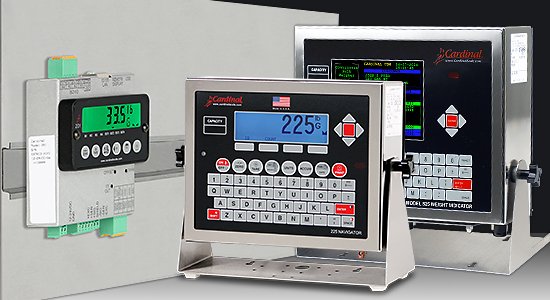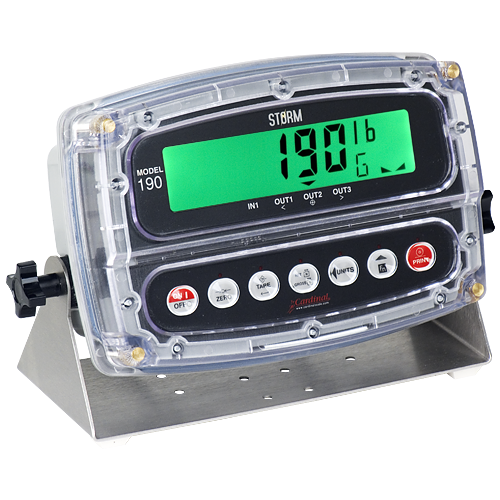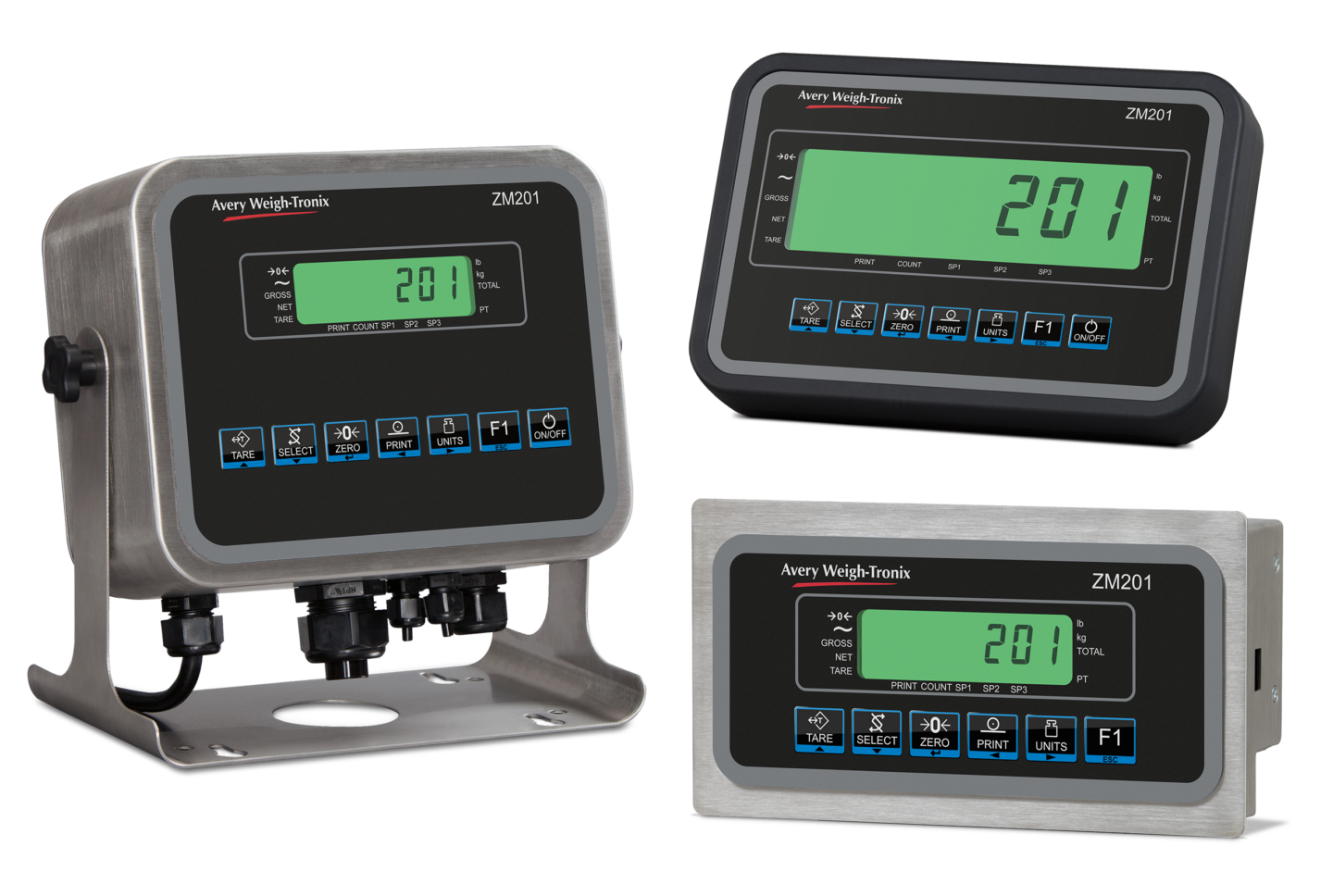Introduction
An industrial scale indicator is an important part of a scale and helps collect and read information. Pricing an indicator can seem a bit overwhelming, especially since it can be a bit of a chore to locate accurate prices for scales and accessories. Weight indicators are digital or analog display devices that indicate the weight of an object located on a connected scale. The weight and measurements standards are created and maintained by the National Conference on Weights and Measures (NCWM). The indicator is a very important part of owning a scale and a good indicator will make weight measurements a lot easier and efficient to obtain.
Breaking down the cost
When breaking down the cost of scale indicators, you need to figure out what you are using the indicator with. Indicators will have varying features and options that will cater to the application that you are using your scale for. In the next sections ahead, we will break down the factors that contribute to the cost of your scale indicator.
Indicator Types
Weight indicators are available with a wide variety of features designed for specialized applications. Depending on the application and the type of device needed will determine the primary functions needed. Weight indicators are programmed to work with different scale types to work with a scale system and vary in type by a digital or an analog readout. There are other features that can be included with an indicator like counting, checkweighing and wireless functionality.
Modern weight indicators are generally used in industries such as industrial, factories, warehouses, shipping and receiving, food, chemical, energy and just about any other industry where materials are being weighed.
One misconception to those new to industrial scales is that the indicator does everything. In reality, the weight indicators are not the ones that perform the weighing of an object. What happens is that the devices convert the weight measured by load cells into a digital readout. Essentially, weight indicators are like the computer for the scales.
what does it cost?
When choosing an indicator that you think is the best option you will definitely look at the overall cost of everything included. Below are our pics along with prices on which weigh indicators will work well for your operation.
Entry level
Ohaus T31P:
Designed with affordability in mind for basic industrial applications, the T31P combines high-impact ABS housing with a large high contrast backlit LCD display, bi-directional RS232 and 100-hour internal rechargeable battery. The T31P also features software for weighing and simple parts counting.
Applications: Weighing, Parts Counting
Display: Backlit liquid crystal display (LCD)
Operation: AC adapter (included) or rechargeable battery (included)
Communication: Easy access communication port including RS232 interface (included)
Construction: ABS housing and painted steel mounting bracket, non-slip rubber feet
Design Features: User-configurable resolution up to 20,000d/6,000e, OIML Approved, NTEP Certified and Measurement Canada Approved
Cost: Starting at $445
Mid Level
Rice Lake 480 Legend series:
Rice Lake is no stranger to the scale industry. Their industrial-strength Legend Series indicators are built for dirty, wet environments and demanding workplaces, inside or out. Advanced circuitry withstands electrical noise, power disturbances and transient spikes that are common to industrial applications. The Legend Series offers a valuable solution for a variety of applications, from basic weighing to batching. Built-in gross/net modes provide quick flexibility for everyday needs. Also utilize the 480’s custom ticket printing to modify
LCD backlit display
Time and date, battery backed
Local/remote operation
Numeric keypad
Keyed entries for setpoint values
Programmable ticket formats for gross, net, accumulator and setpoints
Adapter filter or rolling average filter
Operator functions through menu for audit trail, preset tare, unit ID, accumulator, time and date, setpoints, communications and print formats
Cost: Starting at $750
High Level
Cardinal 825 Spectrum
The Cardinal 825 Spectrum indicator is a top of the line weigh indicator that is loaded with great options and features. The 825 is equipped with a back-lit LCD touchscreen display and stainless steel enclosure, coupled with 64 MB of memory. With connectivity options via 4 bi-directional RS232 serial ports, 110/100 Base-T Ethernet port, 2 USB A host ports, and 1 USB B device port, there is no end to this indicator’s potential. The programming options can link up to 8 operators to use. Other features include a time/date function, adjustable filtering, Gross, Tare, and Net conversion, QWERTY keypad and navigation keys. NTEP legal-for-trade and OIML certified. Supports up to 14 350-ohm load cells.
64 MB User Memory
640 x 480 Pixel Full-Color LCD
Interactive Touchscreen Display
Internet File Management
IP66 Enclosure Rating
Navigation Keys
NTEP Legal for Trade
OIML Certified
Unlimited Truck Storage ID’s
Cost: Starting at $2,315
Washdown
Rinstrum x320 Washdown
The X320 combines innovation in industrial design and engineering excellence to create an instrument that is ideal for use in food processing, automotive, chemical or pharmaceutical applications or applications that require reliable operation in harsh environmental conditions. The X320 indicator builds on Rinstrum's already successful R320 indicator.
Constructed from a plastic alloy that is:
Food grade
Chemical resistant
Temperature resistant
Impact resistant
IP69K rating: the industry's highest environmental protection rating - designed to withstand cleaning with high pressure water jets (1400psi) at high temperatures (up to 80oC) from multiple angles.
Built-in check weigh function with 3 coloured high intensity LEDs
Isolated outputs - Over, Under, Pass. High side driver up to 400mA, allowing direct connection to PLCs and external actuators to be driven directly
Cost: Starts at $715
Conclusion
The cost of a weigh indicator will vary depending on options, application and level of indicator. As stated and shown above, weigh indicators have a lot of differences that separate them from each other. The cost can be anywhere from $450 to over $3,000. Remember that the features and options that you select can impact the cost of your indicator. Evaluating your weigh operation and listing the things you will need and not need will make the selection process a lot more simpler.



